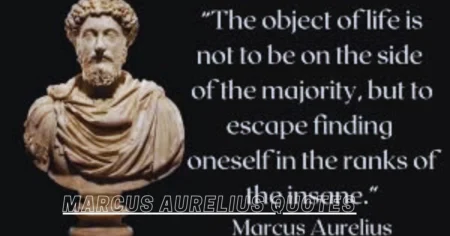Introduction
pulsamento is a term derived from Italian, meaning “pulsation” or “throbbing.” In a broader sense, pulsamento captures the essence of rhythmic flow and the inherent beats that underpin various forms of expression. From the steady beat of a drum to the heartbeat of an individual, pulsamento represents the universal language of rhythm. This article explores the concept of pulsamento, its applications across different fields, and its significance in the arts, science, and daily life.
The Rhythmic Foundation: Understanding Pulsamento
At its core, pulsamento is about rhythm and timing. Rhythm is a fundamental aspect of life, present in the natural world, human activities, and even within our own bodies. The concept of pulsamento encompasses:
Natural Rhythms
The Earth’s rotation, the changing seasons, and the cycles of the moon all exhibit pulsamento. These natural rhythms have been observed and respected by humans for millennia, influencing agricultural practices, cultural rituals, and daily routines.
Biological Rhythms
Within living organisms, pulsamento is evident in various biological rhythms, such as the circadian rhythm that governs our sleep-wake cycles and the rhythmic contractions of the heart. These biological rhythms are essential for maintaining homeostasis and overall health.
Musical Rhythms
In music, pulsamento is the heartbeat of a composition. It is the steady beat that provides structure and coherence, allowing for the expression of melodies and harmonies. Musicians rely on pulsamento to create a sense of timing and flow in their performances.
Pulsamento in the Arts
Pulsamento plays a crucial role in the arts, particularly in music, dance, and visual arts. Each form of artistic expression utilizes rhythmic elements to convey emotion, tell stories, and engage audiences.
Music
In music, pulsamento is foundational. It serves as the underlying beat that guides tempo and timing. Musicians often refer to it as the “pulse” or “groove” of a piece. Different genres of music emphasize various aspects of pulsamento:
Classical Music
classical music, pulsamento is carefully controlled through time signatures and tempo markings. Composers like Ludwig van Beethoven and Johann Sebastian Bach have masterfully used pulsamento to create dynamic and emotionally resonant compositions.
Jazz
Jazz musicians often play with pulsamento, using syncopation and swing to create complex and engaging rhythms. The improvisational nature of jazz relies heavily on the musicians’ ability to feel and respond to the pulsamento of the piece.
Popular Music
In genres like rock, pop, and hip-hop, the pulsamento is usually more pronounced, with a strong beat that drives the music forward. This accessibility makes it easy for listeners to connect with and respond to the rhythm.
Dance
Dance is another art form where pulsamento is essential. Dancers use rhythmic patterns to synchronize their movements and express emotions. Different styles of dance emphasize various aspects of pulsamento:
Ballet
In ballet, dancers rely on the precise timing of pulsamento to execute their movements with grace and accuracy. The choreography is often closely tied to the musical score, creating a harmonious interplay between sound and motion.
Hip-Hop
Hip-hop dance is characterized by its strong and often complex rhythms. Dancers use pulsamento to perform intricate footwork, isolations, and acrobatic moves, creating a dynamic and energetic performance.
Traditional Dance
Many traditional dances around the world are deeply rooted in pulsamento. For example, African drumming and dance rituals use complex polyrhythms to convey cultural stories and traditions.
Visual Arts
In the visual arts, pulsamento can be represented through patterns, repetition, and movement. Artists use these elements to create a sense of rhythm and flow within their works:
Painting
Artists like Jackson Pollock and Wassily Kandinsky have used rhythmic patterns and brushstrokes to convey a sense of pulsamento. Their abstract works often evoke a feeling of movement and energy.
Sculpture
In sculpture, the use of repetitive forms and flowing lines can create a sense of rhythm. Kinetic sculptures, in particular, embody pulsamento through their actual movement, engaging viewers with their dynamic presence.
Pulsamento in Science and Technology
Pulsamento is not limited to the arts; it also plays a significant role in science and technology. Understanding and harnessing rhythmic patterns can lead to advancements in various fields:
Medicine
In medicine, pulsamento is crucial for understanding bodily functions and diagnosing conditions. For example:
- Cardiology: The study of the heart’s rhythmic contractions, or pulse, is fundamental to cardiology. Irregularities in pulsamento, such as arrhythmias, can indicate underlying health issues that require medical intervention.
- Neurology: The brain exhibits rhythmic activity, known as brain waves, which are essential for cognitive functions. Electroencephalography (EEG) is a technique used to measure these rhythms, aiding in the diagnosis and treatment of neurological disorders.
Engineering
In engineering, pulsamento is applied in various ways to improve the design and functionality of systems:
Signal Processing
Engineers use rhythmic patterns to process signals in communication systems. By analyzing the pulsamento of signals, they can enhance data transmission and reduce noise interference.
Robotics
In robotics, pulsamento is used to program rhythmic movements, enabling robots to perform tasks with precision and coordination. This is particularly important in applications such as assembly lines and medical surgeries.
Physics
Pulsamento also has applications in physics, particularly in the study of waves and oscillations:
Wave Theory
Pulsamento is a fundamental concept in wave theory, which describes the behavior of waves in different mediums. Understanding pulsamento allows physicists to analyze and predict wave interactions, such as sound waves, light waves, and seismic waves.
Quantum Mechanics
In quantum mechanics, the concept of pulsamento is used to describe the behavior of particles at the subatomic level. Quantum oscillations and wave-particle duality are phenomena that rely on rhythmic patterns to explain the behavior of particles.
Pulsamento in Daily Life
Beyond its artistic and scientific applications, pulsamento is an integral part of our daily lives. It influences our routines, behaviors, and interactions:
Time Management
Our daily schedules are structured around rhythmic patterns, such as the 24-hour day-night cycle. Effective time management often involves aligning our activities with these natural rhythms to optimize productivity and well-being.
Communication
Pulsamento is present in verbal and non-verbal communication. The rhythm of speech, including pauses, intonation, and stress patterns, plays a crucial role in conveying meaning and emotion. Similarly, body language and gestures often follow rhythmic patterns that enhance communication.
Wellness and Mindfulness
Practices such as yoga, meditation, and mindfulness emphasize the importance of pulsamento in achieving mental and physical well-being. These practices often involve rhythmic breathing and movements that help individuals connect with their inner rhythms and achieve a state of balance and harmony.
FAQs
1. What is pulsamento?
Pulsamento, derived from the Italian word for “pulsation” or “throbbing,” refers to the concept of rhythmic flow and the underlying beats that guide various forms of expression, from music and dance to biological rhythms and natural cycles.
2. How does pulsamento relate to music?
In music, pulsamento represents the steady beat or “pulse” that provides structure and timing for a composition. It is essential for maintaining rhythm and allowing musicians to synchronize their playing and create cohesive performances.
3. Can you give an example of pulsamento in daily life?
One example of pulsamento in daily life is the human heartbeat, which follows a rhythmic pattern. This biological rhythm is crucial for maintaining proper circulation and overall health.
4. How is pulsamento used in dance?
In dance, pulsamento guides the timing and synchronization of movements. Different dance styles use various rhythmic patterns to create expressions, tell stories, and engage audiences, from the precise timing in ballet to the dynamic beats in hip-hop.
5. Why is understanding pulsamento important?
Understanding pulsamento is important because it helps us appreciate the rhythms that influence our lives, from natural and biological cycles to artistic and technological expressions. It enhances our ability to create, communicate, and maintain well-being through rhythmic awareness.
Conclusion
Pulsamento, the concept of rhythmic expression, is a universal language that transcends cultural and disciplinary boundaries. It is present in the natural world, within our bodies, and in the arts and sciences. By understanding and appreciating pulsamento, we can deepen our connection to the world around us and enhance our ability to communicate, create, and innovate. Whether through the steady beat of a drum, the rhythmic flow of a dance, or the oscillations of a wave, pulsamento reminds us of the inherent rhythms that shape our existence and enrich our lives.
Read More: The Housemaid Series: From Classic Film to Modern TV









